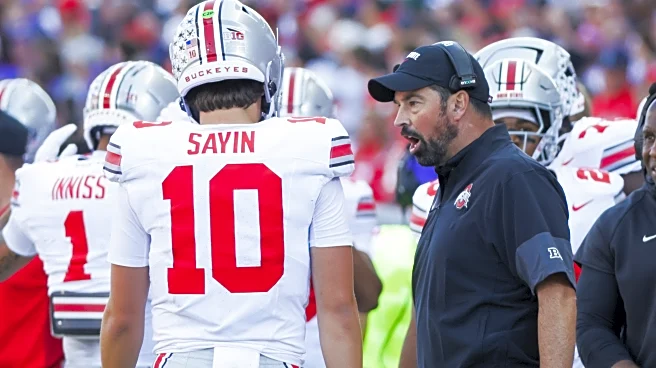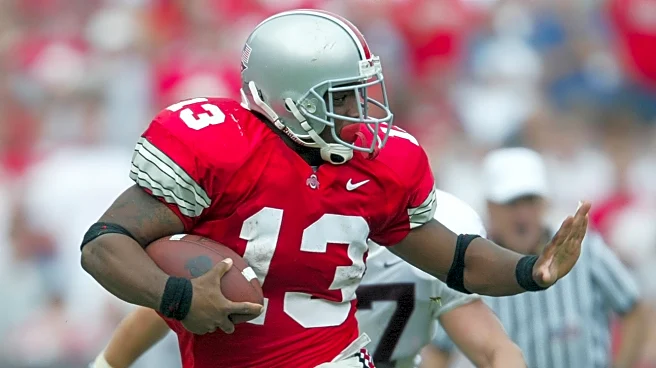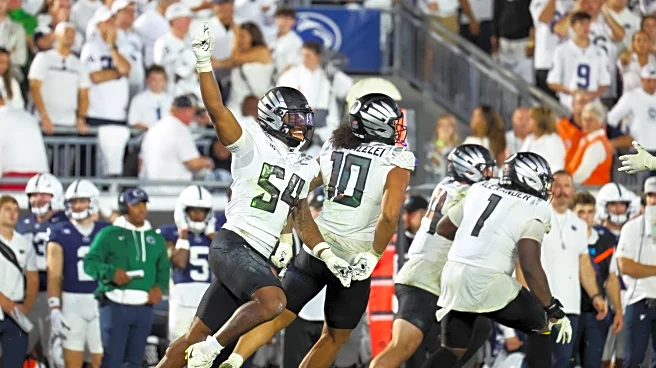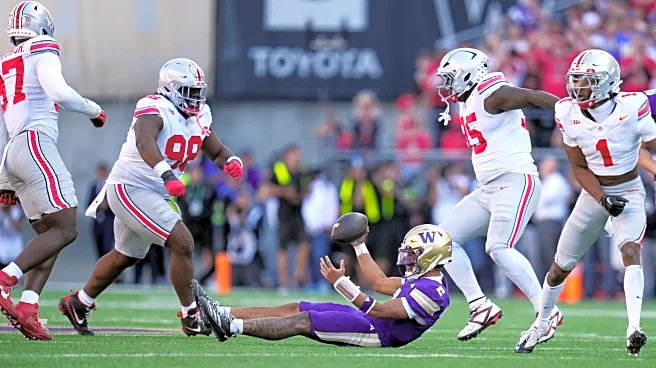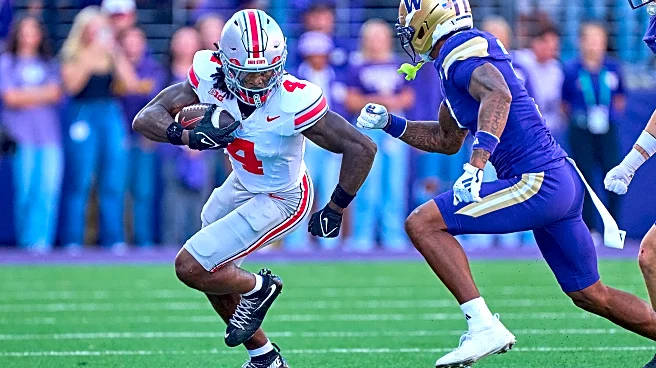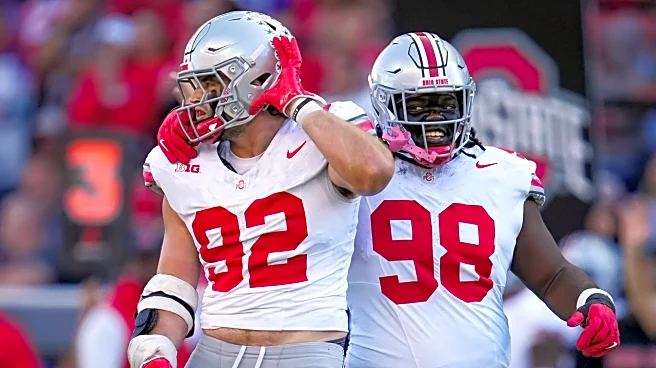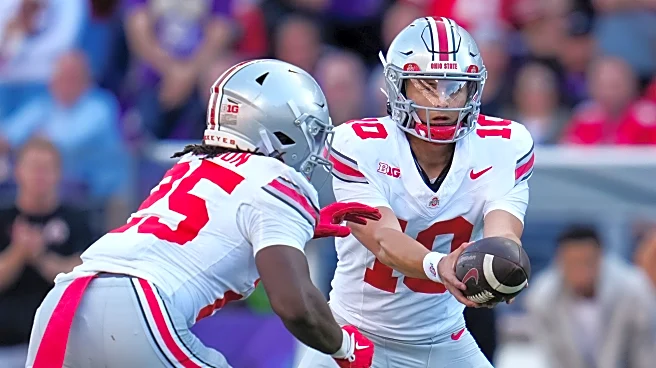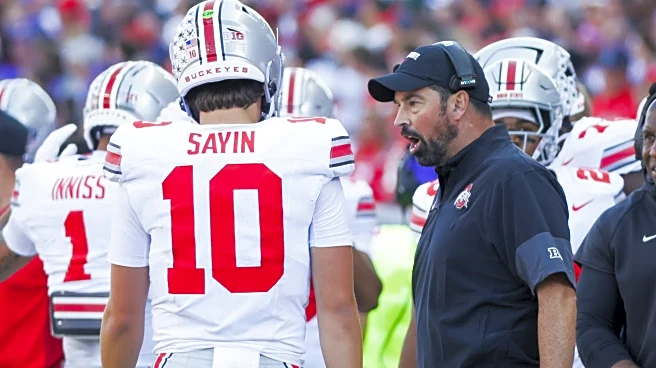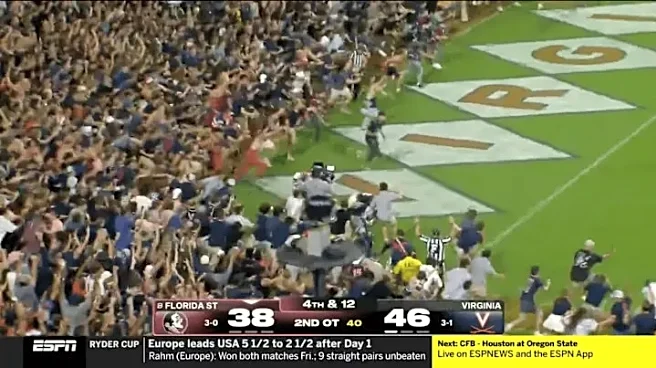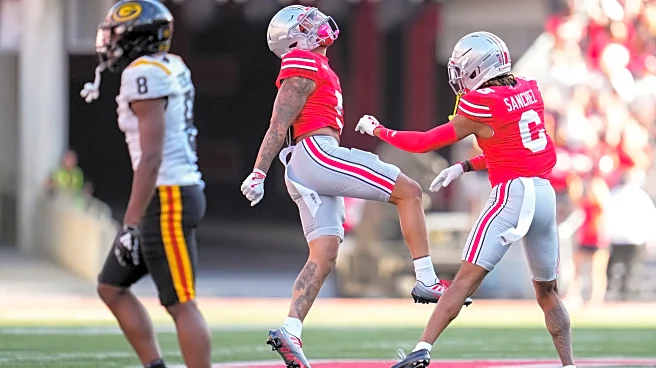Julian Sayin entered 2025 carrying the weight of Ohio State’s quarterback expectations. A sophomore who arrived with five-star hype and immediate starting pressure after last season’s national title run.
Through four starts (Texas, Grambling State, Ohio, Washington) Sayin has answered with elite efficiency and an increasing body of evidence that he’s not just a wunderkind on paper, he’s producing at a level that matters.
Heading into Week 6, he’s 78-of-99 passing for 987 yards, 10 touchdowns and three
interceptions (a 78.8% completion rate and roughly 10.0 yards per attempt), and his QBR sits among the nation’s better marks.

Stat snapshot: The numbers that matter
Sayin’s season line is a useful starting point because it captures both volume and efficiency. 78 completions on 99 attempts for 987 yards, 10 TD and 3 INTs across four games.
Game-by-game, the arc is instructive, a steady climb in comfort and explosiveness:
- 13-of-20 for 126 yards vs. Texas in the opener
- a near-perfect 18-of-19 for 306 yards and four TDs vs. Grambling
- a big 25-of-32, 347-yard night at Ohio (with two interceptions)
- then a calm and efficient 22-of-28 for 208 yards and two TDs in a road win at Washington.
Those four lines add up to the elite efficiency stats he’s put up so far.
What’s improved: Why the “surge” label fits
The single biggest, most obvious improvement is pure accuracy and ball placement.
Sayin’s completion rate (near 79%) and his yards-per-attempt (~10.0) are not pedestrian marks. They combine precision with true downfield impact.
Pro Football Focus (charting throws by depth) has him as the highest-graded QB on 20+ yard passes early in the season (PFF has Sayin graded extremely highly on deep throws and big-play passing), and film shows him consistently putting the ball into tight windows between the numbers and fitting throws into small lanes off play-action.
Against Washington for example, Ohio State leaned on play-action and short-to-intermediate control. Sayin completed 10-of-12 play-action attempts for 96 yards while also showing the ability to escape pressure and buy a few yards with his legs when necessary.
Those traits, accuracy on the move, timed play-action reads and consistent deep-ball touch, explain a big chunk of his statistical jump.
Beyond the throws themselves, Sayin has shown better pocket management than you’d expect from a young starter facing top-tier environments. He has pocket feel to climb the ladder, slide inside lanes and often get his feet set quickly enough to complete high-value throws.
Even under occasional pressure he has hit clutch third-down throws and remained composed on the road in a hostile Husky Stadium. Those are the difference-makers that accelerate a sophomore’s growth curve.
What still needs work: Honest, film-based caveats
Efficiency hides context.
Sayin’s two-interception game against Ohio (25-of-32, 347 yards, 3 TD, 2 INT) was brilliant and also had its worrisome moments in equal measure. It showed elite playmaking, but also risky decision-making in tight windows.
Across the season, the interception rate (3 INTs on 99 attempts) is modest, but the game-film questions remain. He’ll occasionally try to squeeze throws into heavy coverage when a check-down or an earlier throw-away is the easier path.
Against Washington for instance, many of his completions were short or behind the line because the staff tilted conservative against a productive defensive front. Sayin passed the road test, but you could see where Ohio State is still coaching restraint on aggressive reads.
Pressure splits bear watching. PFF’s charting through the early season shows Sayin thriving when clean (high completion rate and big YPA) and still effective when blitzed, but completion percentage and YPA dip under sustained pressure.
That’s not a criticism of Sayin alone. Pass protection and offensive-line communication still matter. The Buckeyes haven’t been frequently sacked this year, but when defenses close the pocket he’s had a few forced decisions.
Continued growth will require sharper pre-snap identification, quicker releases on blitzes and fewer attempts to force contested throws into tight windows.
Finally, the red-zone issue is more team than QB, but quarterbacks often get judged by it. Ohio State’s early-season red-zone hiccups (missed opportunities, a key fumble on a return that changed field position, conservative game plans at times) mean Sayin will be asked to convert in tighter spaces as the schedule stiffens.
How the staff balances aggressive play-calling with protecting their young signal-caller will matter.
Heisman talk and the draft window: Tempering excitement with timeline
Sayin is on the Heisman radar, not the frontrunner, but squarely in the conversation. Sportsbooks and daily trackers list him among the more attractive mid-range candidates (odds across major books have varied in the mid-triple-digits to low-four-digits range depending on the site and the week), a reflection of Ohio State’s national profile and Sayin’s statistical efficiency.
That said, a true Heisman push requires high-volume production, signature wins and no mid-season slip-ups, and those are team-dependent as much as they are individual.
When it comes to the NFL, Julian Sayin is still firmly in the projection phase. As just a sophomore, his stock is less about what he is right now and more about what he could become over the next one to two seasons.
Scouts already see the accuracy, touch, and ability to sustain drives, but they’ll be watching closely how he handles pressure, sharpens decision-making, and continues to rise against top-tier Power Five defenses.
How this season shapes the next steps (team and player)
For Ryan Day and the offensive staff the obvious plan is dose-and-develop, keep letting Sayin manage games efficiently, run schemes that highlight his strengths (play-action, middle-of-field accuracy, deep-ball touch to Jeremiah Smith and Carnell Tate), while accelerating exposure to high-pressure situations that force quicker reads.
Defenses around the country will test his progress by sending more complex pressure packages. The key will be whether Sayin reacts with better pre-snap recognition and quicker releases rather than relying solely on post-snap escape agility.
On the roster side, continued protection upgrades and a reliable run game will preserve his efficiency and protect his long-term growth curve.
Bottom line
Through four starts, Julian Sayin has done what you want an ascending sophomore to do. He’s been efficient, he’s made the big plays, and he has shown temperament in tough environments.
The PFF numbers (elite on deep attempts), his 78.8% completion rate and the ability to deliver on the road at Washington and in his first game against No. 1 Texas all point toward a quarterback who is trending up.
But the season is still young. If Sayin tightens up his decision-making under rush, maintains the deep-ball excellence, and continues to grow his command of the offense, the Heisman conversation gets louder and legitimate long-term NFL talk becomes very real over the next two seasons.
If he stumbles in the next stretch of Big Ten play, that narrative will cool quickly. For now, Ohio State, and college football, has a sophomore quarterback worth watching closely.
